3 Automotive Urban Legends, Hoaxes, and Conspiracy Theories

Automobiles have been around for more than 120 years. It shouldn’t be surprising that, over that time, myths and lore have accumulated. Some of those stories are indeed true, like that of Henry Ford physically attacking the prototype of the restyled Model T that his son Edsel had commissioned on the sly. Others are fanciful and have that certain ring of urban legend, and there are even those stories alleged to involve dark secrets and conspiracies. Even paranoids can have actual enemies, of course, but most conspiracy theories deserve their association with headgear made of thin sheets of refined bauxite. However, as the rabbis of the Talmud taught, no lie can stand without a grain of truth to make it believable.
So without further delay, let’s look at three popular stories that are often repeated in various iterations as the truth, the whole truth, and nothing but the truth, that people swear happened to a friend of a friend of a friend. Enjoy the read, and then in the comments below, please tell us your favorite automotive urban legend, myth, or conspiracy theory.
Myth #1: Henry Ford’s Specifications for Parts Crates Allowed Him to Recycle the Wood as Floorboards
Our first tall tale has to do with Henry Ford, the subject of many such yarns. Allegedly, Ford Motor Company specified the size of crates used by component suppliers so the boxes could be carefully broken down and the wood panels repurposed as floorboards for Model Ts.
My favorite, rather elaborate, version of this story (elucidated here at the Jalopy Journal) hinges on what kind of plywood Ford used for floorboards. Of course, one commenter says, “the facts are true.”
Apparently, one of his outsource CEO’s got a call from Henry, not in regard to the product being sent to Ford, but the containers they were being shipped in. Ford started growling at the guy that the boxes were unacceptable and needed to be changed IMMEDIATELY! Ford then gave the fellow instruction on what type of wood to use, new dimensions, AND where to drill the holes and what type screws to use.
Now, as soon as the gentleman was off the phone with Henry, he was back on with of Ford’s execs, along the lines of, “the guy has finally cracked, etc”.
Well, the day came for the first shipment to arrive. Ford came down to the loading dock, with a train of exec’s waiting to see whether or not Ol’ Henry was ready for the happy farm… Ford asked one of his employees to move one of the boxes over to the assembly line, took off his jacket, unscrewed one of the boxes and put the board onto a chassis that was on the line.
I know that I embellished a bit (been a while since I’ve heard the story), and I don’t know what year it was, but the facts are true—Ford got free floorboards out of his supplier.
In reality, not much of that story is true, although Ford did use a lot of wood in making the Model T. It’s estimated that each Model T used about 100 board feet of lumber—for the floorboard, toeboard, dashboard, spokes for the “artillery” style wheels, and a wooden frame for the body’s steel panels.
Also, after the Dodge brothers (who were his primary supplier) parted with Ford, Ford Motor Company developed into one of the most vertically integrated manufacturing firms in history. Eventually, FoMoCo made its own steel from ore mined from its own mines, its own glass, and Henry even tried growing his own rubber trees in the Amazon. There was a period when Ford didn’t have that many outside suppliers. Because of his need for wood Ford owned about a half-million acres of forest in Michigan’s Upper Peninsula, along with three lumber mills as well as a large industrial facility in Iron Mountain for milling that wood into usable parts. If anyone was making wood crates for Ford parts, it was Ford. Those wood crates, however, were not recycled into floorboards. There was a special department at the Rouge facility for recycling that wood into other crates.

The urban legend dates back over a century. In fact, in 1922, the financial and business editor of the New York Tribune wrote Henry Ford to verify the story and Edsel Ford’s office replied, saying there was “no truth whatever” in the story.
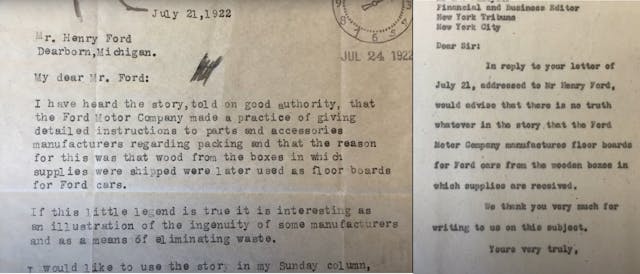
One part of the story that is true: Henry Ford was very much into recycling. The Iron Mountain facility didn’t just make wood parts (and bodies for “woodie” station wagons and eventually military gliders during WWII as well). It processed sawdust, wood scraps, and other waste materials into usable materials like methanol, creosote, and charcoal briquettes.
Myth #2: GM Bought Up Streetcar Companies to Kill Public Transportation and Sell More Cars

The idea of big corporations conspiring to increase profits at the public’s expense is an easy one to sell to credulous people, even some who are initially skeptical.
This particular conspiracy theory has been amplified by Hollywood, via the 1988 film Who Framed Roger Rabbit? and on public television through the documentary Taken for a Ride. Here’s how it goes: In the mid-20th century, American cities had inexpensive, efficient, and convenient public transportation provided by streetcars running on rails and powered by overhead cables. General Motors changed all that when it bought up streetcar companies and purposefully stymied them by increasing fares and decreasing service. All of this was supposedly a step in ultimately replacing them with buses that were more profitable to GM, but less convenient to riders. In turn, the add-on effect would be to persuade now-unhappy public transportation riders to switch to privately owned automobiles.

We actually know the origin of this conspiracy theory. Fifty years ago, a newly hired attorney named Bradford Snell, working for the U.S. Senate on antitrust matters, testified that the government had criminally charged “…General Motors and allied highway interests for their involvement in the destruction of 100 electric rail…systems… throughout the country.”
Snell further said that a “federal jury convicted GM of having criminally conspired with…others to replace electric transportation with gas or diesel-powered buses,” and that the streetcar systems had been “vastly superior” in terms of speed and comfort to the internal-combustion-engine-powered buses that took their place.

Snell concluded,
“The noisy, foul-smelling buses turned earlier patrons of the high-speed rail systems away from public transit, and, in effect, sold millions of private automobiles…General Motors’ destruction of electric transit systems across the country left millions of urban residents without an attractive alternative to automotive travel.”
Let’s break this down. It’s indeed a historical fact that the General Motors-affiliated companies (with investments from Firestone, Standard Oil and other companies in the oil and transportation sectors) National City Lines and Pacific City Lines started to purchase municipal trolley systems starting in the late 1930s. It’s also a fact that, in a few short years, those streetcar lines went out of business, to be replaced by municipal bus lines. As well, it’s a historical fact that GM, Pacific City, and other firms were indicted in 1947 for conspiring to monopolize the interstate sale of buses, fuel, tires, and other supplies to their captured transportation companies, as well as conspiring to form a transportation monopoly. While most of those companies were convicted on charges of monopolizing the sale of buses and related materials, they were acquitted of the charge of trying to monopolize transportation in general.
Transportation Quarterly is an academic journal published by the non-partisan Eno Transportation Foundation. In 1997 it published a paper by Cliff Slater titled General Motors and the Demise of Streetcars arguing that there was no conspiracy. Slater argued that the trolley systems were replaced by buses for strictly economic reasons. Buses were cheaper to run than streetcars and were much less expensive to implement because they didn’t need railways. Cities and suburbs were expanding rapidly, and it was much easier, cheaper, and faster to simply add another bus stop on existing roads, rather than extend the rails.
The paper further asserts that it wasn’t the death of streetcars that increased private car ownership; it was the other way around. Before the popularization of the private automobile, if you wanted to get to work on time, you took pains to live within a 30-minute walk of a streetcar line. The convenience of driving directly to one’s destination in privacy and comfort won out over taking a crowded trolley and then having to walk blocks from the trolley stop to one’s final destination. Additionally, having a private automobile makes shopping and carrying home your purchases more convenient.
In 2010, CBS’s Mark Henricks reported:
There is no question that a GM-controlled entity called National City Lines did buy a number of municipal trolley car systems. And it’s beyond doubt that, before too many years went by, those street car operations were closed down. It’s also true that GM was convicted in a post-war trial of conspiring to monopolize the market for transportation equipment and supplies sold to local bus companies. What’s not true is that the explanation for these events is a nefarious plot to trade private corporate profits for viable public transportation.
Myth #3: The 200-Mile-Per-Gallon Carburetor
This myth also has to do with alleged suppression. In this case, oil and car companies supposedly kept a highly efficient carburetor off of the market.
In truth there are, ahem, manifold reasons why the auto industry moved away from carburetors and embraced electronic fuel injection. Controlling emissions was probably the, ahem, driving factor but the simple fact is that fuel injection works better. (Editor’s Note: Ronnie’s throat-clearing quota has been reached. One more and we pay him in lozenges.) What’s surprising is that despite the indisputable superiority of fuel injection, stories about miracle carburetors continue circulating to this day. What’s not surprising is that, despite the change in technology, there are still dubious fuel-saving devices on the marke. Many claim to work via your car’s OBD II port or even the 12V power socket.
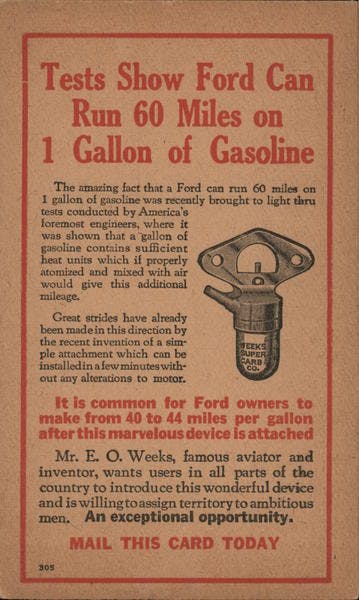
As with other urban legends and conspiracy theories, this one has a compelling story. Variations abound.
Here’s the gist: Someone takes delivery of a car from a major automaker. In some versions it’s a retirement gift from the company, in others a couple arranges for a factory delivery. They are shocked to discover that the car achieves unheard-of fuel economy. In some tellings, it’s 100 mpg; in others, it’s as much as 200. Of course, nobody can ever prove it because these stories usually end in one of four conspiracy-laden ways:
- Mysterious men show up, pop the hood, make a few adjustments and the magical mileage returns to normal.
- The automaker recalls the car. It is either replaced by another car or the original car is returned, minus the unusually efficient gas mileage.
- Guys in suits with briefcases of cash show up and make an offer that can’t be refused.
- The car is stolen or otherwise disappears overnight.
The popularity of this particular urban legend has arguably tilled fertile ground for scam artists promoting dubious inventions. You may have heard of scams such as the “Fish Carburetor.” To make matters more confusing, while there have been multiple cases of such fraudulent products, there was a genuine, non-scam Fish carburetor.
We’ll get to the real-deal Fish carb in a moment, but first, let’s look at the Pogue carburetor. The Pogue’s story contains many elements essential to nonsense narratives of this type, though I think the story might be best characterized as a hoax, rather than a scam, since no money or products ever changed hands.

Charles Nelson Pogue (1897-1985) was a mechanic and inventor from Winnipeg, Manitoba, Canada. From 1927 to 1934, Pogue successfully filed for four carburetor patents, U.S. patent 1,750,354, U.S. patent 1,938,497, U.S. patent 1,997,497, and U.S. patent 2,026,798. While some reports describe Pogue’s carburetors as catalytic, none of the patents mention the use of catalysts. What the patents do mention is vaporization. Some context: One problem that affected early carburetors was an inability to fully aerosolize fuel, resulting in small drops of liquid fuel remaining unburned. If you could better vaporize the fuel, people deduced, you’d get more power and better fuel economy because of more complete combustion.
In 1936, the Canadian Automotive Trade magazine reported that a car equipped with the new carb was able to travel 1879 miles on just 14.5 gallons of gasoline. (That works out to 129.5 mpg.) A Winnipeg car dealership manager claimed to have achieved 217 mpg after fitting a Pogue carburetor to his car. Another dealer claimed to have gone 26 miles on just one pint, which is 208 mpg. As the stories spread through Canada, the reports and rumors proliferated.
To his credit, Pogue denied these reports. Some said that thieves had broken into Pogue’s shop and had stolen some of his carburetors to either discover its secrets and/or suppress its production. Wealthy Canadian backers were rumored to be negotiating with Pogue for the rights but the deals somehow never came to fruition. Some believed Ford of Canada had bought the rights to the technology.
P.M. Heldt, the engineering editor of Automotive Industries magazine during that period, in regard to a diagram of the Pogue carburetor, said, “The sketch fails to show any features hitherto unknown in carburetor practice, and absolutely gives no warrant for crediting the remarkable results claimed.”
Critics wanted to see the miracle carburetor, but Pogue apparently never demonstrated a working version, nor did his carburetor ever see series production. Of course, as these things go, the fact that the Pogue carb never saw the light of day is pointed to as further evidence of the conspiracy to suppress it. Thus, the story continues to be perpetuated. The fact that there is no record of Pogue ever assigning rights to his patents to anyone, including car and oil companies, doesn’t get as much air among conspiracy theorists.

Unlike the Pogue carburetor, the Fish Carburetor Company actually produced working carburetors—over 125,000 of them from 1947 to 1959. Invented by hot rodder John Robert Fish in the early 1930s, and protected by three U.S. patents, the Fish design was meant to solve the problem of carburetors’ float chambers. Carburetors use a float chamber to meter fuel to the jets; the chamber fills with fuel and a float attached to a valve shuts off the fuel when the chamber is filled. Acceleration, cornering, and braking forces can affect the position of both the float and the fuel, interfering with fuel delivery and causing drivability issues.
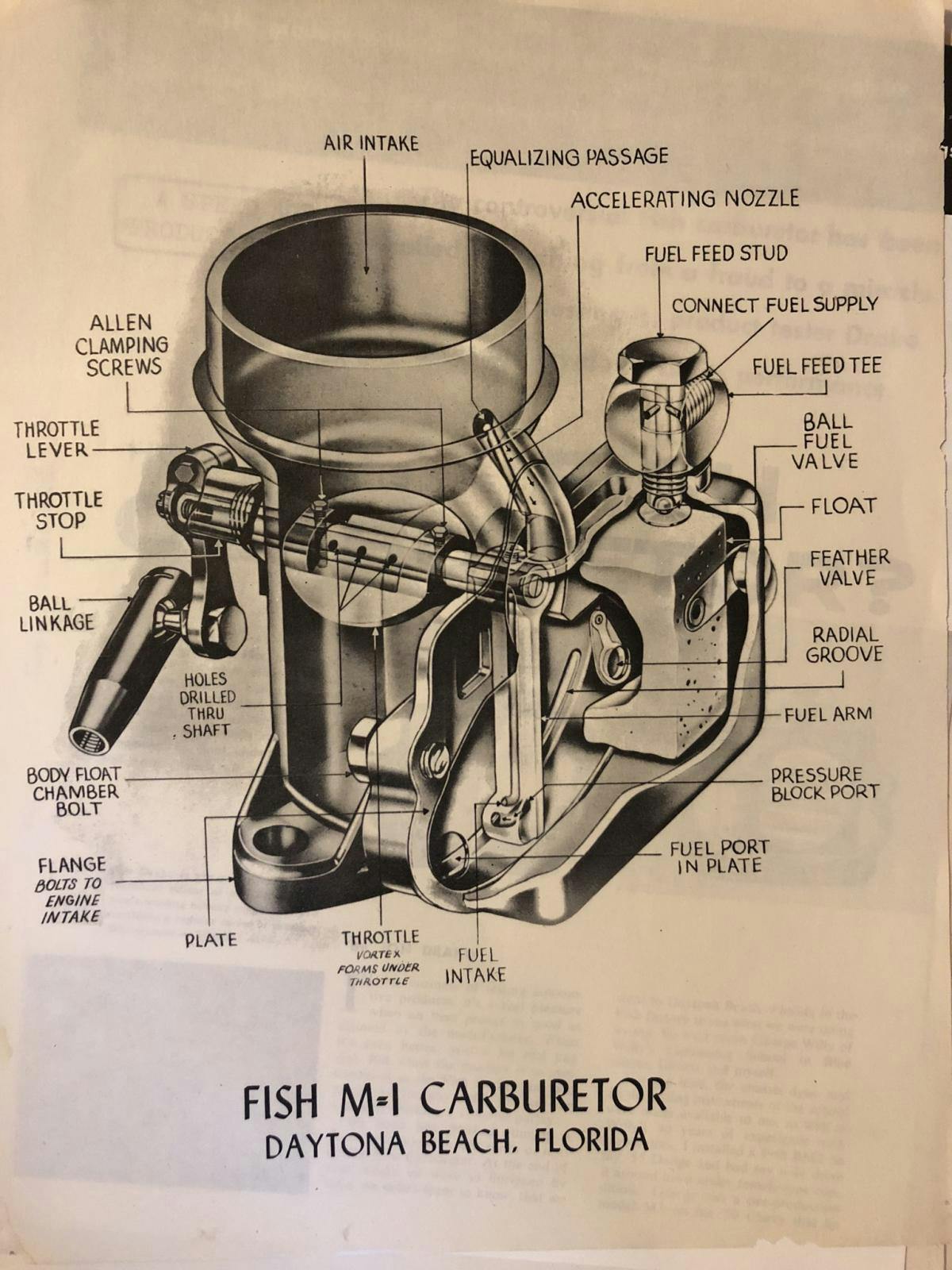
The original intention of the Fish carburetor was to avoid the weaknesses of the float chamber and its sensitivity to the forces of acceleration and cornering. The sources I found give two different descriptions of how Fish’s invention worked: One source says that the carb operates on pressure differential—not air speed. The other says that it sensed the mass of the airflow rather than the volume. Either way, the Fish device was said to be self-adjusting and self-compensating to changes in weather or altitude. The Fish design also did away with accelerator pumps with a clever ram air design.
Instead of the single jet of conventional units, the Fish carb delivered fuel using six to ten jets built into the throttle spindle, which was said to produce better fuel atomization and vaporization, thus improving fuel economy, power, and cold-weather starting. Fish claimed 20 percent better fuel economy and 30 percent more horsepower when compared to conventional carburetors.
The Fish carb got a publicity boost when stock car legend Fireball Roberts swapped out the OEM four-barrel carb in his Hudson Hornet racer for a couple of Fish units, to some success. The Fish induction system became popular in the early days of stock car racing.

Now here’s where the Fish story gets a little bit, ahem, fishy. (Editor’s Note: So will it be Halls or Ricola?) Supposedly, original equipment carburetor makers conspired to put Fish out of business. Fireball Roberts was said to have done well in qualifying, but somehow his tires never lasted the way they did for factory-supported stock car teams. The United States Post Office allegedly started marking all of Fish’s shipments “FRAUDULENT,” returning them to sender with claims that the carburetors were not actually being produced. (That’s a little bit odd considering that there’s an archival photo of the production line in Daytona.)
It’s worth remembering that the era in which Bob Fish was operating was one during which time federal bureaucrats and prosecutors effectively put Preston Tucker out of business, though a jury acquitted him and his associates of any wrongdoing. It thus seems possible that overzealous postal inspectors, concerned about gas-saving gadget scams, targeted an innocent company.

The way the story goes, the Post Office’s actions resulted in the carburetor’s rights being reassigned to a Canadian company, which sold them outside of the United States.
The Fish carburetor truly did develop a following in the hot rod community, and the Brown Carburetor Company of Draper, Utah put it back into production, making about 10,000 new Fish-design carburetors from 1981 to 1996.
On the Jalopy Journal forum site, a poster said a friend tested a Fish carburetor versus a conventional unit on his 1961 Ford six-cylinder standard transmission station wagon. Over 1000 miles of testing with each carb, the Fish improved mileage by about 10 percent but at the cost of losing about 30 percent of the power as well as having less torque, affecting drivability.
How, then, can we explain the success that Fireball Roberts had with the Fish carb? Well, they do apparently work well at wide-open throttle, which also explains their popularity with period hot rods. The two Fish carbs that Roberts used had approximately 40 percent more venturi area than the stock four-barrels.
By the mid-1950s, carburetor design from major manufacturers like Holley, Carter, Stromberg, and Rochester had improved significantly. And, seeing as the Fish carburetor appears to have had some drawbacks in street-use vehicles, it’s understandable how it faded from the market via natural causes, so to speak. Combine Roberts’ success with a disappearing act and you have, ahem, fuel for conspiracy fancies about magical carburetors.
Please let us know about your favorite automotive urban legends, conspiracy theories, frauds, or hoaxes in the comments below!

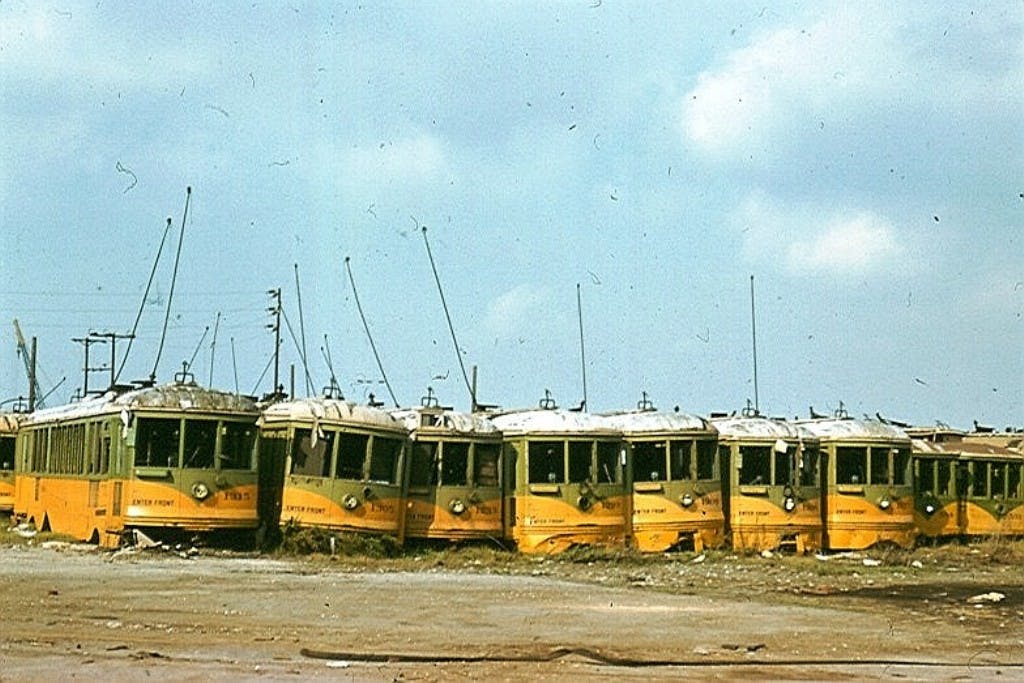
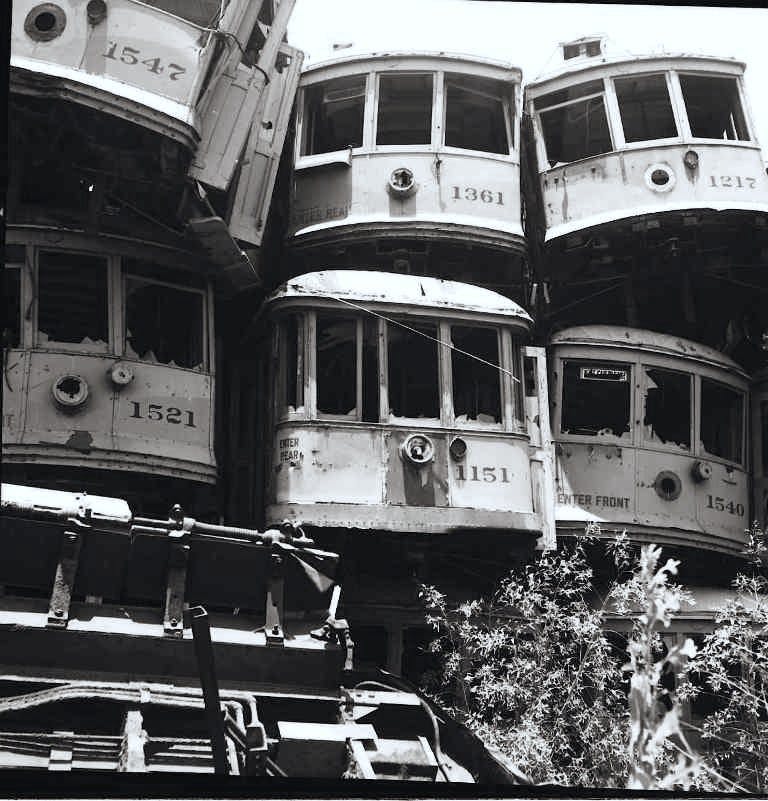


Floral Park, NY, early ’50s: my father-in-law, quite the character, has a neighbor annoyingly bragging about his new Beetle’s MPG. He and a couple of the guys start re-filling the car’s fuel tank late at night, and said neighbor is now over the moon & bragging like crazy. A month or so later, the jokesters start siphoning fuel out of the car’s tank. Neighbor is now going nuts trying to determine what’s gone wrong. By that time the prank was played out, I guess, or perhaps a new target had been located…
What about the magic contraption that allowed you to run your car on water by extracting the hydrogen from the water? Oh, the humanity.
GM had a fleet of experimental electric cars (300 I believe) that they leased to customers on the west coast for testing. After the test period, all of the cars were sent to the crusher to the dismay of the customers who wanted to buy the cars. Talk about short sightedness! (a.k.a. Tesla!!!)
Not shortsighted – not ready for prime time. I remember Don Sherman of Car and Driver says that in the winter, the EV-1’s range was less than 20 miles …
Oh sure. This is exactly what the big corporations want. A respected organization, trusted by auto enthusiasts, to publish a “myth busting” article to try and quell those of us who know better! This is exactly what we should expect and demonstrates Hagerty is part of the uh hum “conspiracy” 😁
Huum…I didn’t think of that!
A friend told how his truck was getting 25 miles per gallon on the highway, while everyone else got about 17.
He took it in for a tune up, and the mechanic found a flake of metal lodged in the main jet.
Once removed, his milage returned to normal.
This was in southern California where it was never cold enough for his lean burning truck to give him troubles.
He still laments the tune up that cost him great milage.
He must’ve never taken it out on the highway. Carbs run lean at higher rpms. If he’d had something in the jet, the engine would’ve run rough or repeatedly hesitated there.
My info is from personal experience. I tried to fix a bad carb gasket with Permatex and a small chunk would up in the main jet.
In the early 1970’s, the manager of accounting for a company I worked for won a 1953 Chevrolet sedan. Even though it was old it was in good shape and he was proud of it because he said he had never won anything before His office was towards the front of the building and engineering was in the back – by the parking lot. The engineers decided to have a little fun and make the manager really proud – they would pour a gallon of gas into his tank every so often. The manager only drove the car to and from work in town and was surprised that he was getting 100+ mpg. One Friday after work he had to go to another town about 50 miles away. He looked at his gas gauge and estimated that he had about one gallon of gas left but it was only 50 miles so no problem — PROBLEM. Naturally, he runs out of gas so now is really late. He fills the tank and when he gets back home fills the tank again and is now getting less than 20 mpg so he takes the car to his mechanic and tells him something has happened to the car because it is no longer getting the fabulous gas mileage. The mechanic informs him that there is nothing wrong with his car and that it was never capable of getting 100+ mpg. About now the engineers decide it is time to get the gas back so start siphoning out a gallon of gas ever so often. Now the car is only averaging 10 mpg. The manager quickly sells the car never fully understanding what was happening.
As a resident of deer infested country, I am a true believer in “deer whistles”. At speeds above 30mph, they produce a high pitched noise only deer can hear. I have seen evidence of deer turning from me when I approach and feel they are effective. Many of my friends think I am nuts and at a cost of around $5 a pair, I explain I will continue to use them because Lord knows I have spent money much more foolishly!
In the 90’s a girl I was dating put a set of deer whistles on her car. Sometime later she hit a deer. I went to look at the car. I said to her “The reason you hit the deer is because you installed the left whistle on the right side and the right whistle on the left side. In that configuration the devices ATTRACT deer. She bought it.
😂🤣😄👏👏👏
Sorry it’s not true that only Deer can hear them, and also my Dog thinks you’re an a-hole, 😁😂🤣 just kidding around,
You must not ever carry pets in your car.
I think the Hudson had two single barrel carbs on some models, not a four-barrel.
Martin, that was my first thought when I read the article — calls the issue into doubt immediately! I don’t believe Hudson could mount two four-barrels, but I know it did with two small ones, which would allow Fish 1-bbls to be fitted. Twin ‘small-h’ Power? Most pics of the Fish I’ve seen show a very small venturi, not one ‘40% larger’. So… a six in the 300-inch class could have handled one four-barrel (Pontiac’s 195-cu.in. four did it well in ’61-63 — I had one) or perhaps three or even four two-barrels…
Fireball Roberts was my hero when he drove the big Ponchos; I’d hate to think that he was in on a scam… Sure sounds FISHY! I M Humble O.
Latest Ford hoax. An ugly electric box merits being called a Mustang. Remember, a cat can have kittens in the oven but it doesn’t make them biscuits. John
https://fordauthority.com/2024/08/ford-mustang-mach-e-among-least-stolen-vehicles/
….for a good reason.
Yep, Least Stolen becuse they are Fugly Who would want one, they are a disgrase to the Mustang name!
If you want mileage and comfort, get a hybrid camry or corolla. 50+ mpg, no long waits to recharge and proven technology.
Hybrid is the way to go, Wake Up People
Just because GM and National City Lines did not actually conspire to close down the trolley lines does not mean that they were not the victims of both official policy and private corporate actions that favored cars and made public transport ever less desirable. Other countries where that combination of factors did not exist, and which were also embracing private cars enthusiastically after the war, did not lose their light rail systems entirely — they kept and upgraded them, and now they don’t have to replace them at immense expense, as many American cities are doing. SOMETHING destroyed most of North America’s streetcar lines — even if it was not so much a deliberate conspiracy as a range of policies and actions.
Streetcar lines themselves were a bubble – there was an investment fad around the turn of the 20th century, to the point where three(!) companies were competing to lay track in my little college town. But they were very lightly built compared to intercity lines (there’s a section on display at the museum around the corner from my house if you want a picture), and they never made enough money to replace the rolling stock, let alone lay more track. Both the equipment and the routes were obsolete by the 1930s, which is why mass transit ridership actually increased when they were replaced by buses.
I had a 1920s home in Omaha Nebraska close to the Ford Assembly plant. The attic floorboards were made from Ford parts crates. So maybe not used for Model T floorboards, but definitely used for floorboards!
While in the military, in the early 80s, I heard stories of a ceramic engine that was capable of 80 mpg and was supposedly kept off the market by a payoff/purchase by the oil industry.
That was in Popular Science and it was Ford working on it.
I heard a story in the 80’s about six industrial engines designed to run 24/7 were used in six new Mercury cars. The result was a bulletproof motor allowing the cars to run half a million miles or better.
I’ve heard the story of the woman who passed away and was buried in her precious Corvair.
I was looking for the “WWII Army surplus Harley Davidsons buried in a ditch” story. Supposedly instead of flooding the civilian market with new, still in the crate military bikes, the Army dug long ditches, dropped in the crated Harleys, and covered them over. They were recently discovered, still in crates, coated with cosmoline. They were for sale for only $100, or $250 depending upon the story teller. All you had to do was in rate them and bolt them together! Add gas and oil, and away you go with a new antique! No one could ever seem to find any contact information on the seller of these pristine gems. Too bad. I would have bought several!
There’s a grain of truth to this one, though no Harley Davidsons or ditches were involved. My late neighbor was a Seabee in WWII, and after the Bomb saved them from the planned invasion of Japan, they took barges of bulldozers and other equipment out to deep water, blocked the gas pedals, and watched them roll off into the ocean.
The Royal Navy ditched hundreds of carrier based aircraft on the way back from the Pacific theater.